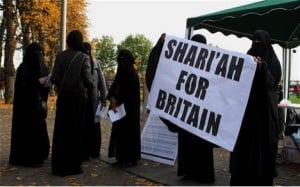Ahdaf Soueif’s novel The Map of Love, published in 1999, tells the history of Egypt through two parallel plots, set at the beginning and at the end of the 20th century. During a conversation with Egyptian intellectuals, one of the characters argues, familiarly, that:
we live by slogans. We take comfort in them: the great Egyptian people. The peaceful, patient nation that when it is aroused shatters the world. Shatters the world? Tell me when in all of history did the Egyptian people rebel? When?…The people have no voice.
That moment could be said to have come during the heady eighteen days which forced Egyptian president Husni Mubarak out of power. During those days, Tahrir Square became a symbol of people power, setting in motion the movement which has been called the Arab Spring or the Arab Awakening, and in the process helping to overcome reductive narratives of Arabs and Muslims. Ahdaf Soueif spent many of those days reporting from Tahrir Square for the Guardian, represented as one of the “Women of Tahrir.”
As one of the few major Egyptian-born novelists writing in English, Soueif is often described as a translator between cultures and languages. For some, this translational work is tempered by disappointment that her novels do not engage directly with religion, specifically with Islam. For example, Gregory Nash believes that “rather like her mentor Edward Said, Soueif has judged it politic to avoid the religious issue” and thus “prefers to promote somewhat watered-down postcolonial positions and a discourse foregrounding the possibilities of cross-cultural understanding.”
Nash goes on to argue that Soueif’s novels are overburdened by political commentary, identifying a dual populist stance based on “the novelty of seeing a pro-Arab pro-Palestinian orientation in works of English fiction” as her novels politics “ingratiates her with her small bilingual (and in Arabic translation, much larger) Arab/Egyptian audience while their commercial features…make concessions to the taste of her western readership.”
The distinction Nash draws suggests unease with the combination of a focus on cross-cultural understanding, or “watered-down postcolonial positions,” which asserts that culture is the site of flux and freedom. The criticism of the “avoidance” of “the religious issue” is an implicit commentary on expectations that narratives of Muslim women conform to the specific patterns of an oppositional narrative. This results in the problematic evaluation of literary texts based on how successful they are as “liberatory” texts.
However, another way of looking at the politics of “avoiding the religious issue” is to see the religious aspect of the characters as just that: one aspect of Arab culture among others. This disrupts both neo-orientalist and Islamist stereotypes that religion is all that motivates Arab and/or Muslim political struggles, allowing Soueif to engage with politics without participating in the clash of civilizations attitude. This counters the homogenization which, as Soueif puts it in her 2001 essay “Nile Blues,” attributes “simple and immediate motivation to Arabs and Muslims as though they were all single-celled creatures.”
Recalling how she felt consistently “out of step” with coverage of the Middle East when she lived in London during the ‘80s, Soueif describes herself “constantly coming face to face with distortions of my reality,” and in her writing, works to restore complexity through a focus on nuanced understanding. For example, in“The Language of the Veil,” she writes about an issue many Middle Eastern women have experienced:
And so it is that, having refused many times to write about ‘the veil,’ I am now trying to put together some thoughts about the ‘dress code’ of Arab or Muslim women. But I immediately run into problems. Muslim women are not all Arab. The conditions of Iranian women are different from those of the women of Pakistan, Turkey, Indonesia, and now, famously, Afghanistan. And they are all different from the Arabs. And not all Arab women are Muslim….So whose dress code shall I talk about? Where?
In her essay collection Mezzaterra: Fragments from the Common Ground, Soueif describes the space of cross-cultural understanding which she wants to inhabit as “Mezzaterra,” “a meeting-point for many cultures or traditions.” As Soueif recalls in the introduction, “Growing up Egyptian in the Sixties,”
meant growing up Muslim / Christian / Egyptian / Arab / African / Mediterranean / Non-aligned / Socialist but happy with small-scale capitalism. On top of that, if you were urban / professional the chances were that you spoke English and / or French and danced to the Stones as readily as to Abd el-Haleem.
However, that Soueif’s inclusive mezzaterra is itself dependent on a political perspective is acknowledged, as she points out that occupying this common ground depended on “believ[ing] what Western culture said of itself: that its values were universalist, democratic and humane,” and that once you “peeled off military and political dominance, the world so liberated would be one where everyone could engage freely in the exchange of ideas.”
Soueif notes that “as the Eighties rolled into the Nineties, the political direction the world was taking seemed to undermine every aspect of this identity,” describing an increasingly beleaguered Mezzaterra: “as some have sought to invade and grab territory and others have thrown up barricades, I have seen my space shrink and the ground beneath my feet tremble.”
As her writing shifted from celebrating this space to “an attempt to demonstrate its existence” Soueif describes the mezzaterra as becoming her central subject in response to “that trumpet, a clash of civilizations.”
The utopian meeting-place Soueif describes seemed closer to reality during the exciting days of Tahrir, but almost half a year after the spark of revolution, with the ongoing protracted uprisings in the Middle East, unsteady support from the West, and the latest assault in Tahrir, the mezzaterra is still as illusive, an optimistic promise in an uncertain and exhilarating time. There is still the need to combat the trumpet of the clash of civilizations, to present an alternative to the limiting narratives which Soueif described as “distortions of my reality.”











